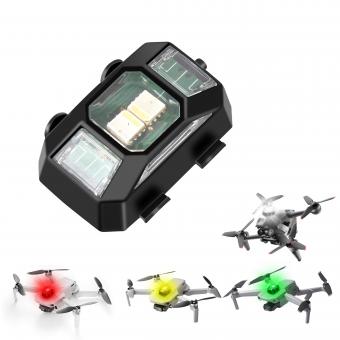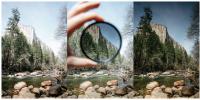How Does A Camera Work For Children?
Cameras are fascinating devices that allow us to capture moments in time and preserve memories. Explaining how a camera works to children can help spark their curiosity and foster a deeper appreciation for technology and photography. Let’s dive into the basics of camera operation in an engaging and simple manner that kids can easily understand.
First, it's important to convey that a camera is much like the human eye. Just as our eyes take in light and convert it into images, cameras utilize a combination of light, lenses, and sensors to produce photographs. When explaining to children, you can make comparisons to everyday experiences they are familiar with, which can make complex concepts much easier to grasp.
The Magic Lens

At the heart of every camera is the lens. The lens is responsible for focusing light onto the sensor (or film in older cameras). To illustrate this, you can use the analogy of a magnifying glass. Just as a magnifying glass can concentrate sunlight to a small point, a camera lens gathers light from the entire scene and focuses it.
When light passes through the camera lens, it bends and converges to form an image. This image is naturally upside down, much like the reflections seen through a spoon’s bowl. However, modern cameras have systems in place that automatically correct this so that the final photo appears right-side up.
Shutter Magic

The next piece of the camera puzzle is the shutter. The shutter is akin to the eyelids. When our eyelids are open, light enters, and we can see. When they're closed, no light can enter, and we see nothing. Similarly, the camera's shutter opens to let light hit the sensor or film and closes to stop the light.
Controlled by a button, the shutter speed—how long the shutter remains open—plays a critical role in capturing photographs. If the shutter stays open for a long time, more light comes in, which is good for darker scenes. However, if quick action is happening, a faster shutter speed is needed to freeze the motion, thus preventing a blurry picture.
The Light Sensor

Modern digital cameras don’t use film; they use something called an image sensor, which is a tiny chip covered in millions of light-sensitive cells. These cells collect light photons and translate them into electrical signals. These signals are then processed by the camera's onboard computer and stored as digital images.
In film cameras, the film acts as the light sensor. When the shutter opens, light hits the film, causing chemical reactions that create an image. These images then need to be developed in a darkroom or sent off to be developed at a photo lab.
Understanding Focus

Focus is all about making sure the picture is sharp and clear, with details easily distinguishable. Cameras adjust the lens to ensure that the light rays converge properly on the sensor or film, capturing a crisp image of the object in focus.
For kids, visualizing focus can be likened to the process of looking through a pair of glasses. Without glasses, everything can look blurry, but with the correct focus, everything becomes much clearer. Many modern cameras come with autofocus features, which automatically adjust the lens for clear pictures.
Composition and Framing
While knowing how a camera works technically is exciting, it's equally important to introduce the concept of composition to kids. Composition is how you place the subjects in your photo to make it interesting. Think of it like arranging toys or drawing a picture where everything is in the right place.
The rule of thirds is a simple and useful guideline. Imagine your camera view is divided into nine equal squares by two horizontal and two vertical lines. Placing interesting elements along these lines or at their intersections can often create a more visually appealing photo. For instance, if you’re photographing a person, try placing their eyes along one of the top horizontal lines; this usually makes the picture look balanced and natural.
The Importance of Light
Lighting is one of the critical aspects of photography. It's all about how light affects the image, its direction, and its intensity. Natural lighting, like sunlight, is often the best because it’s free and can create beautiful effects. However, the direction from which light comes can drastically change the look of the photo.
Soft, diffused light (like on a cloudy day) often helps to avoid harsh shadows and highlights. On the other hand, direct light (like a sunny day) can create striking images with strong contrasts. Encourage children to experiment with light, noticing how it changes during different times of the day.
The Evolution from Film to Digital
For a bit of historical context, it's intriguing to note the evolution from film to digital photography. In the era of film cameras, photographers had to be more deliberate with each shot since film was expensive and finite. Digital cameras, on the other hand, allow for practically limitless experimentation since digital storage can hold thousands of images.
This transition has made learning photography more accessible and less intimidating for kids. They can take numerous shots without worrying about wasting film, encouraging creativity and learning from trial and error.
Fun and Practice Makes Perfect
The most important part of learning how a camera works is to enjoy the process. Photography can be a lot of fun and is a wonderful way for kids to explore the world around them. Encourage children to experiment with different subjects, lighting, and compositions. They can start with simple subjects such as their pets, toys, or family members.
Taking part in photography-related activities, like photo scavenger hunts or creating a photo story, can also keep them engaged and excited. By practicing regularly, they'll not only understand the mechanics of how the camera works but also develop an eye for capturing great shots.
Wrapping Up
Understanding how a camera works involves appreciating the role of the lens, shutter, sensor, and focus. By breaking down these components into child-friendly analogies and encouraging practical experimentation, children can gain both a technical understanding and an artistic appreciation of photography. As they explore and practice, they will develop a deeper interest in capturing the world around them, creating memories and stories through their lens.








































